RS Sharma is currently working as Director General & Mission Director of the Unique Identification Authority of India (UIDAI) and is responsible for implementing this ambitious and challenging project undertaken by the Government of India for providing Unique Identification to all its residents. In his capacity as the DG&MD of this project he is responsible for over-all implementation of this mission mode project. Prior to this assignment Mr. Sharma worked with the Government of Jharkhand as Principal Secretary, Departments of Science and Technology and Drinking Water & Sanitation. His previous assignments include Principal Secretary of the Departments of Information Technology (IT), Rural Development and Human Resources Development.
An update on India’s Unique Identification project for registering and enrolling 1.2 billion citizens in the world’s largest biometric identity database
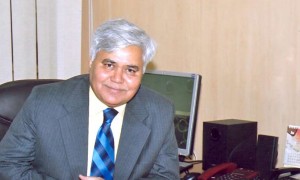 India’s Unique Identity Project is hailed as the most ambitious and impactful ID project designed and implemented in the world so far. To date, the scheme has reached 240 million enrolments and assigned about 200 million UID numbers. ID People spoke to RS Sharma, Director General & Mission Director of India’s UIDAI to learn the current progress of the scheme and which pilots are al- RS Sharma Director General & Mission Director Unique Identification Authority India ready underway as a result of its evolving implementation.
India’s Unique Identity Project is hailed as the most ambitious and impactful ID project designed and implemented in the world so far. To date, the scheme has reached 240 million enrolments and assigned about 200 million UID numbers. ID People spoke to RS Sharma, Director General & Mission Director of India’s UIDAI to learn the current progress of the scheme and which pilots are al- RS Sharma Director General & Mission Director Unique Identification Authority India ready underway as a result of its evolving implementation.
What is today’s status of the UID program and by when do you foresee it will be completed?
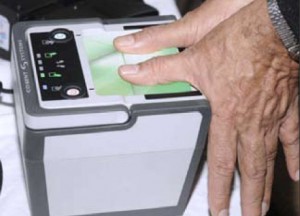 On August 7 we signed the agreement with Indian managed service provider, HCL Infosystems, about a year after the public tender that led to the selection of the main partner for the second phase of the program. HCL will be our system integrator for the entire project, which sees half a billion US dollars spent over seven years to complete its second phase. They will be in charge of managing data centers, calling in the biometrics service providers and implementing the program throughout the country. Their end-to-end service covers many aspects, except for logistics. Correspondence with citizens and residents and management of the customer satisfaction service letters (complaints filed in, etc.), will remain directly under the control of the UIDAI.
On August 7 we signed the agreement with Indian managed service provider, HCL Infosystems, about a year after the public tender that led to the selection of the main partner for the second phase of the program. HCL will be our system integrator for the entire project, which sees half a billion US dollars spent over seven years to complete its second phase. They will be in charge of managing data centers, calling in the biometrics service providers and implementing the program throughout the country. Their end-to-end service covers many aspects, except for logistics. Correspondence with citizens and residents and management of the customer satisfaction service letters (complaints filed in, etc.), will remain directly under the control of the UIDAI.
At the present time we have reached 240 million enrolments and assigned about 200 million UID numbers. Phase one of the UID program was completed in February, 2012 and had reached peak registration levels of 1 million enrolments per day. The second phase kicked-off in July and the speed at which we progress is now back up to a level of 700.000 enrollments a day. Seeing the current rhythm of progression, we feel that the UID program will reach completion by the end of 2014. By then we should have enrolled 85% of the 1.2 billion members of India’s population.
Have some of the UID service programs already started?
Yes, indeed. Service programs already began in the form of pilots that we activated in the areas where the enrollment of residents is almost complete. In fact, our 200 million UIDs are not spread out evenly across the country, but there are areas where we have already achieved 90 percent enrollment of the population. Of course it made sense to focus on these opportunities to start issuing the services that are implied as part of the mission of the UID program: inclusion in banking programs, direct transfer of subsidies to bank accounts, pensions to the elderly, scholarships to students, wages for employment programs.
Is the UID program intended to act as a weapon against corruption?
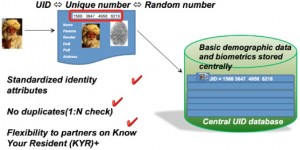 Transparency in the transactions I alluded to eradicates some of the greatest leakage issues we have within our social relief programs. Beneficiaries of the public subsidies sometimes claim them with multiple identities or with fake identities altogether, thus touching benefits that should be reaching other members of the underprivileged population. The proof of receipt that we can count on issuing a service in connection to a UID number offers a new basis of accountability that will make previous levels of leakage impossible. And as the unequivocal authentication of the recipient will prove the delivery of service, UID numbers will play a central role in eliminating the economy of proxies.
Transparency in the transactions I alluded to eradicates some of the greatest leakage issues we have within our social relief programs. Beneficiaries of the public subsidies sometimes claim them with multiple identities or with fake identities altogether, thus touching benefits that should be reaching other members of the underprivileged population. The proof of receipt that we can count on issuing a service in connection to a UID number offers a new basis of accountability that will make previous levels of leakage impossible. And as the unequivocal authentication of the recipient will prove the delivery of service, UID numbers will play a central role in eliminating the economy of proxies.
Of course, corruption has an element of complacency and benefited stakeholders as well. Given the proportion of the phenomenon of diversion of public subsidies in India, we were able to foresee and take into account resistance to the UID program by elements in public administration affected by the change in service delivery paradigms. Gladly this resistance has not been in the position to slow us down so far. (Note by the editor: it is not by chance that the UIDAI, the authority behind the UID program, is directly reporting to the Prime Minister of India and not to the various ministries).
The UIDAI is showing the world an all new way to approach the issue of identity. How did you succeed in embracing this pioneering role?
 In India we see how the advantages of our governmentdriven ID scheme largely outweigh its costs and that benefits brought to the population are indeed worth the gigantic effort behind its implementation. The UID project is indeed the most ambitious and most impactful ID project designed and implemented to date. On one hand we have the challenges that come with the size of the project, on the other we have the promise of unprecedented opportunities in terms of including entire segments of the population in our society and have them exist in the eyes of the government, access services, vote, receive subsidies in a controlled and fully accountable way.
In India we see how the advantages of our governmentdriven ID scheme largely outweigh its costs and that benefits brought to the population are indeed worth the gigantic effort behind its implementation. The UID project is indeed the most ambitious and most impactful ID project designed and implemented to date. On one hand we have the challenges that come with the size of the project, on the other we have the promise of unprecedented opportunities in terms of including entire segments of the population in our society and have them exist in the eyes of the government, access services, vote, receive subsidies in a controlled and fully accountable way.
India sees 60 billion US dollars per annum spent in government- issued relief programs. But what is today’s cost of leakage? If we consider the percentage of this huge level of public spending that is lost in the pockets of corruption and diverted to illegitimate recipients instead of reaching its intended destination, we can easily come forward with a conservative assessment of at least a 10% leakage. Supporting the full accountability of the transactions related to the relief programs will position the expected level of return of the UID program well above its 4 billion US dollar cost in a single year.
Moreover, as we look at the socially relevant implications of introducing the UID scheme, it is evident that its promise in terms of positive impact on our society goes far beyond the concerns regarding any potential issues to address.
UID is integral to India’s ambitious goal and today’s greatest opportunity: feeding the hungry, reaching out individually to the poor, giving them the means to be active in the financial domain and defending the underprivileged from abusive behavior by whoever takes advantage of the lack of transparency in the value chain of our subsidy and support systems. This is the vision driving the UIDAI and the objective of the UID program. If we succeed in the implementation of this program, a whole new paradigm will be established for ID management
What about privacy? Is identity perceived in different ways, according to whether a society’s most felt necessities are in a higher or lower position in the Maslov pyramid?
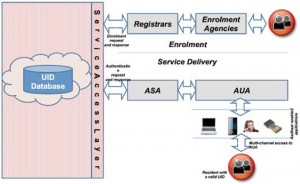 On the surface we could almost think that this is the case. However I see our common perception of identity management more as a legacy of the precedent experiences within our society.
On the surface we could almost think that this is the case. However I see our common perception of identity management more as a legacy of the precedent experiences within our society.
As a matter of fact, the UID Project could not have been carried out in the US or in Europe. It would imply succeeding in the effort to carry out a radical change in the established concept of identity management. This effort was not necessary in our country, where precedent experiences with identity management have not left as profound a trace in the way we look at identity.
The way identity management is interpreted and viewed upon comes as a legacy of the use cases broadly deployed in our societies. In the Western world and in the majority of developed countries, the typical use cases of identity management were related to law enforcement, national security, migration control, border control and – internally – access control. The pervasive use of identity management systems focused on these objectives and shaped the common understanding regarding identification. Identity schemes inherit
a most security-related and law-enforcement-related flavor. Even the underlying technology – biometrics in our case – is perceived as a technique traditionally used for security programs. Working on a biometrics project? Well, this is crime tracking stuff. It all leads to the stronger perception of identity as being at the cross-roads of a security versus privacy trade-off, which to some extent is limiting the vision about what identity really brings to the table.
Service delivery is in fact the use case that the UID program is focusing on. It is our prime objective and will see the coming of a real revolution as a natural consequence of the new identity scheme. We are presenting the case of a national ID scheme to include the underprivileged in our society at a time were large portions of the Indian population still have not experienced the opportunity of being assigned with any form of government-issued identity, not even to mention a bank account. The perception from the citizens and residents and acceptance level is driven first, by what they expect the system to offer them (what is in there for me?); and secondly, by their historic experience with identities (were there concerns before?). As we start from a rather neutral standpoint, where no established concepts shape the common understanding of identity and identification, what happens in fact is that we import the fear and criticism that bred elsewhere. We are somewhat victims of ideas and concepts matured on the basis of how identity was interpreted very differently in other countries. But this can be overcome, as the UID program is itself producing a whole new wave of direct impressions that will form public opinion well beyond some of the current positions – based on what we know or think to know about different programs carried out in other parts of the world.
Are you facing any challenges in terms of public acceptance of the UID scheme?
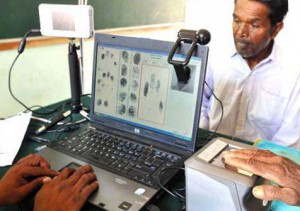 The benefits that can result from a large scale citizen ID scheme designed to include the underprivileged into our society are all too evident. Addressing the issue of poverty and financial inclusion of the larger parts of our population addresses primary concerns that are shared by the vast majority of stakeholders, from a government and citizen’s perspective. If we read numbers and facts from the point of view of a country that sees service delivery and accountability in the social relief programs as an unresolved and immensely costly issue, it becomes evident how identity management schemes address an outstanding issue that is an extremely critical emergency – involving the lives of many more than those who are actually in the position to argue about an identity versus privacy trade-off.
The benefits that can result from a large scale citizen ID scheme designed to include the underprivileged into our society are all too evident. Addressing the issue of poverty and financial inclusion of the larger parts of our population addresses primary concerns that are shared by the vast majority of stakeholders, from a government and citizen’s perspective. If we read numbers and facts from the point of view of a country that sees service delivery and accountability in the social relief programs as an unresolved and immensely costly issue, it becomes evident how identity management schemes address an outstanding issue that is an extremely critical emergency – involving the lives of many more than those who are actually in the position to argue about an identity versus privacy trade-off.
Even in our country we face some level of criticism and there are skeptics or opponents that express concerns about the potential risk to incur abusive leveraging by the government on the identification scheme. Nonetheless the debate with challengers is at a healthy level and does not cause the project to stall as it would indeed in other parts of the world. It currently only creates a friction we must factor into our overall effort as we progress with implementation of the program.
The real issue I see is that there must be a way to overcome some of our traditional distorted or partial thinking about identity as something that implies a trade-off with respect to privacy. Identity management is not anti-privacy. There must be a way to take care of concerns in a way that can reconcile today’s dissonant positions. Of course this makes us face the challenge of working in a forward- thinking manner, to prevent the misuse of technology and systems.
